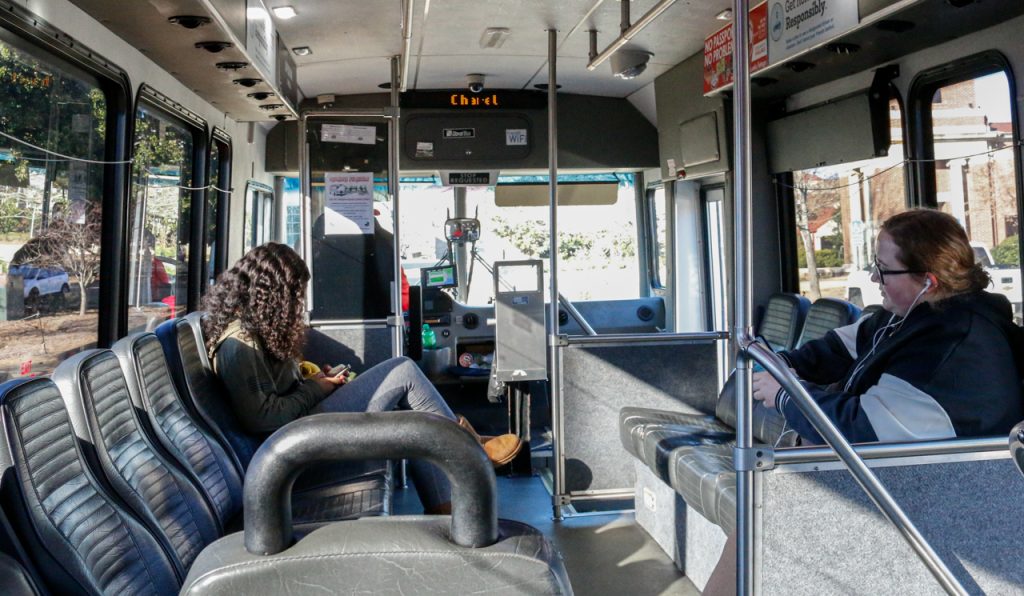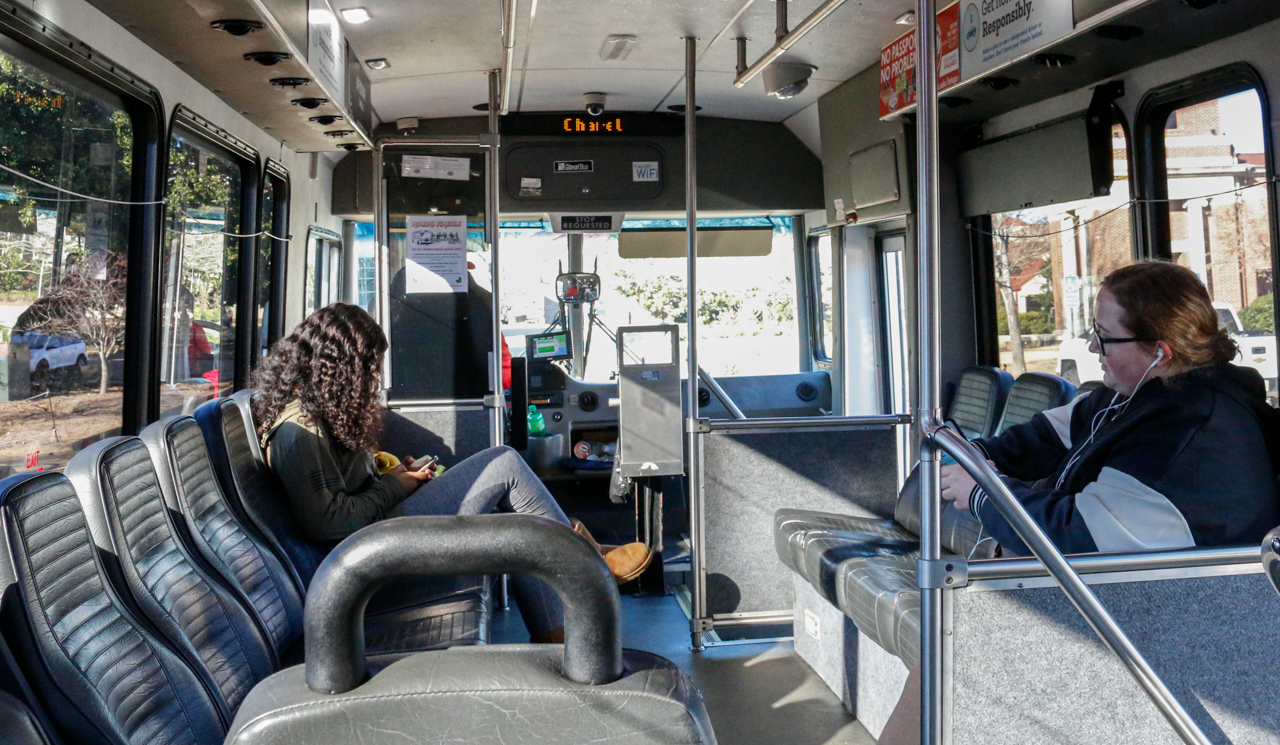
Starting this semester, the Oxford-University Transit (OUT) is reducing the number of buses on two lines through campus and cutting down the total routes around the community.
The Silver line stops will be incorporated into the existing Green and Old Taylor Road Express lines.
OUT General Manager Donna Zampella said these changes were prompted by infrequent ridership on the Rebel Red and Rebel Blue lines, which circulate campus, and on the Silver line, which runs from Park-n-Ride areas by the South Campus Recreation Center to the Kennon Observatory.
“For the past two years, the (Rebel Red and Rebel Blue buses) were carrying an average of around six passengers an hour for all four buses,” Zampella said. “We needed those two buses in other areas that were having difficulty with overloading and schedules not met due to traffic.”
One of the buses was moved to Red North and the other to Blue West, but Sima Bhowmik, a journalism graduate student from Bangladesh who regularly rides these routes, said the added buses have not helped.
“It’s been a really bad experience,” Bhowmik said. “Just providing two buses doesn’t make it easier to catch one. They’re trying to help, but it’s really not working, or not helping me, at least.”
Many students who ride on the OUT buses have the NextBus app on their phones to see the location of the buses and a timeline for arrivals, but Bhowmik said since the spring semester began, she has not been able to track her buses at all.
Bhowmik also said the bus schedules often do not adhere to class schedules, and that this has been her experience on every different bus route she has taken with OUT, including Red North and Yellow.
“I have to come to school at eight every morning, but sometimes the earliest bus doesn’t show up to my stop until 7:50 or 7:55,” Bhowmik said. “Just this past Friday, my teacher told me I was 14 minutes late to my class, but what else can I do, not knowing when the bus will be there?”
Zampella said that OUT is well aware of the difficulties students have with NextBus, which is why they will be implementing a new GPS app called QRyde this fall. QRyde will allow riders to see the exact location of the buses as they wait for them. Bhowmik said this is the first semester that she has not had access to this type of feature in her two years using the OUT system.
“We are waiting for Google maps to make us go live, any day (now). That will also be available when the app is down. This will be available on our website outransit.com,” Zampella said. “However, our drivers try very hard to stay on schedule unless it is out of their control, so they should be able to go by the schedule if the app is down.”
The system, which has 27 running buses, transports over 19,000 people every week, according to Zampella. While new buses are being placed on routes over the next month, the university manager of transportation, Hal Robinson, said that they will only replace buses on which OUT’s leases have run out.
“We have substantial bus infrastructure on campus,” Robinson said. “However, buses are extremely expensive. I mean for the new buses, they were over $300,000, which is only 20 percent of the total price because we got help through a federal grant.”
A university press release on Jan. 28 said that one of the new buses is already in service on the Green and Old Taylor Road Express routes. Four more will be rolled out by the end of February. “The low-floor, two-door buses will make boarding easier and faster. The buses being new also should significantly reduce unscheduled maintenance,” the release read.
University officials have previously said that university goals regarding transit services were to “promote balanced mobility” and “make the services more convenient for both on-campus and off-campus users.” Robinson said that making this type of goal a reality is difficult because of the type of transportation students want.
“Everyone wants to park and be right by their building they’re going to, but that’s just not possible,” he said. “Our department and the university as a whole is in this problem of how we get students to campus.”















